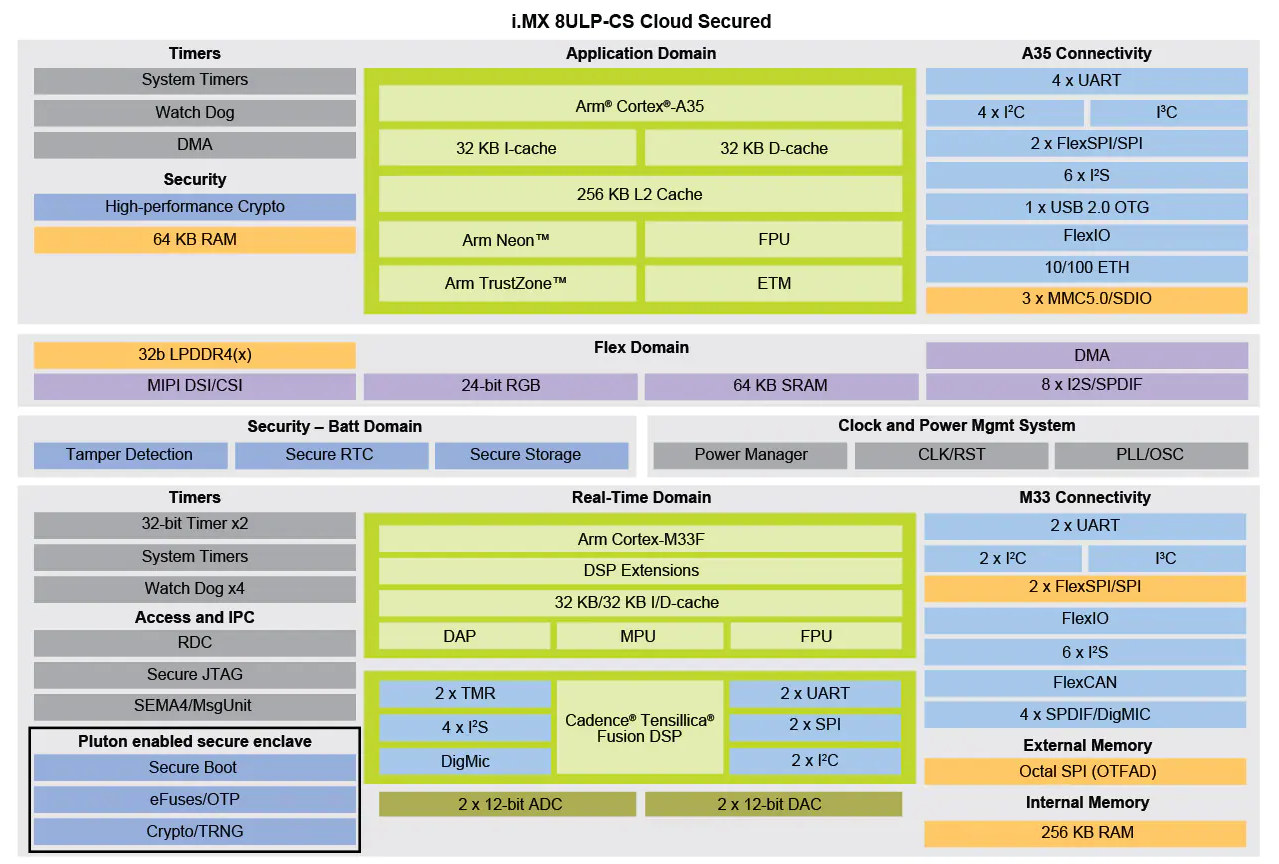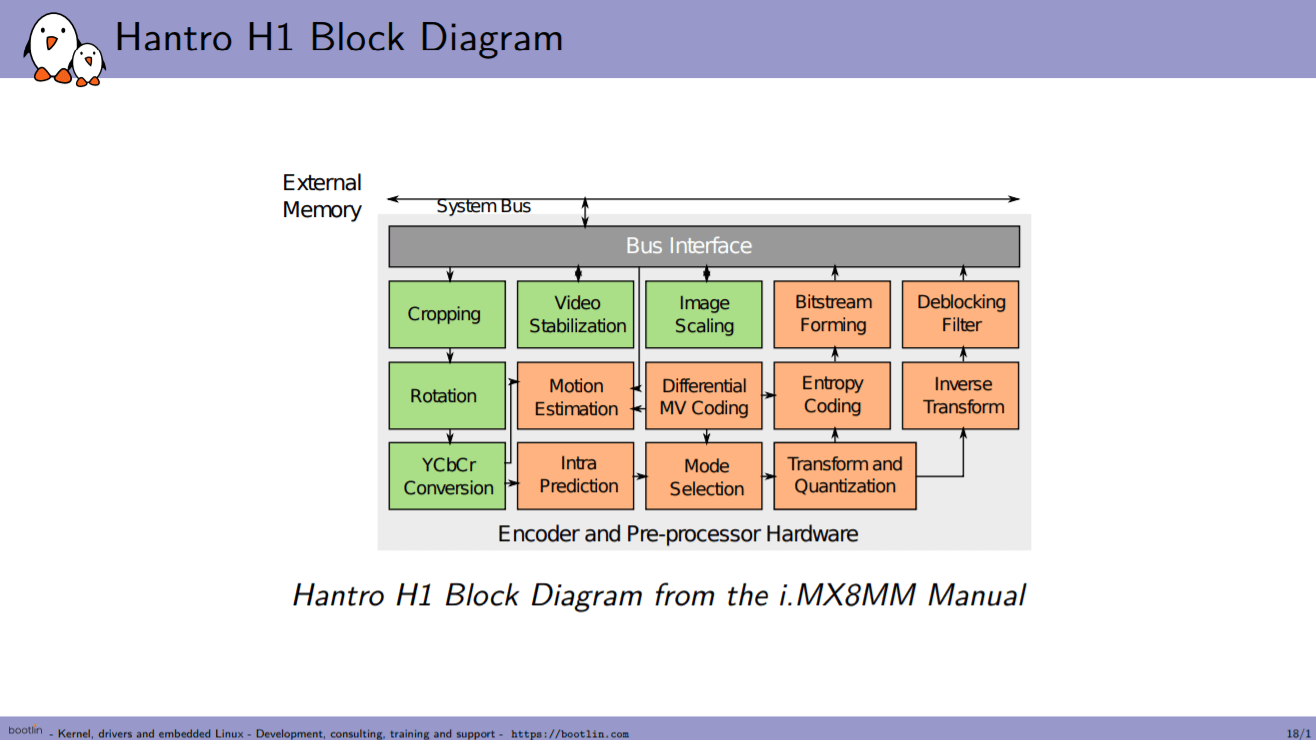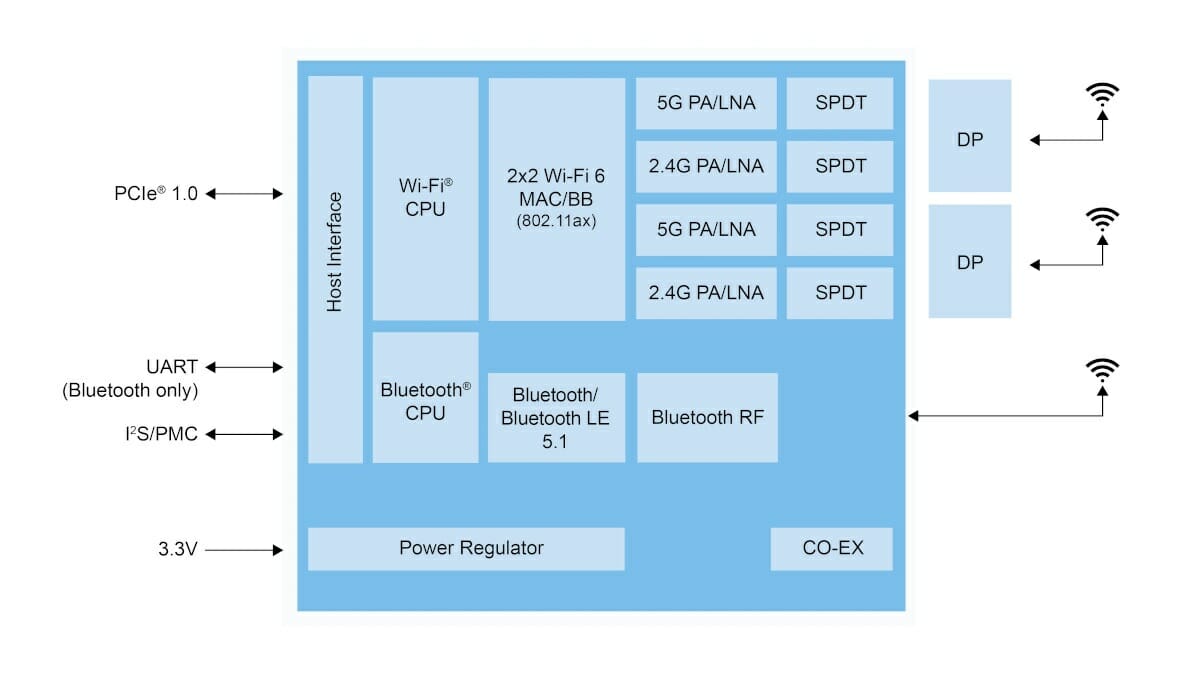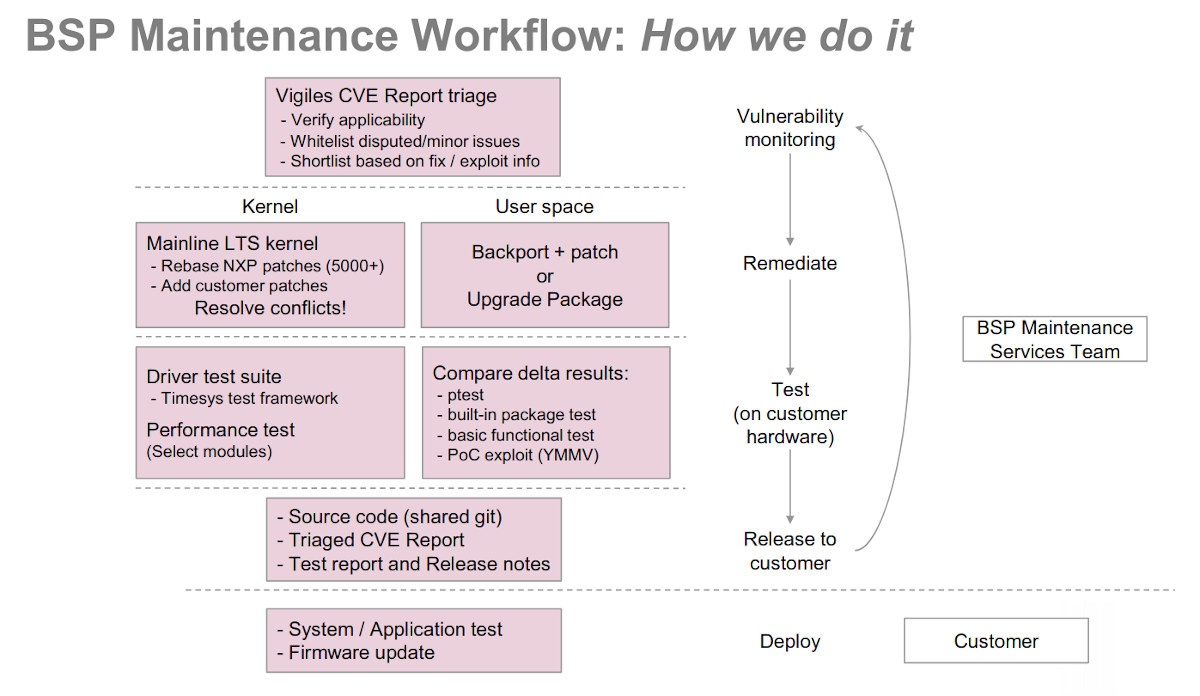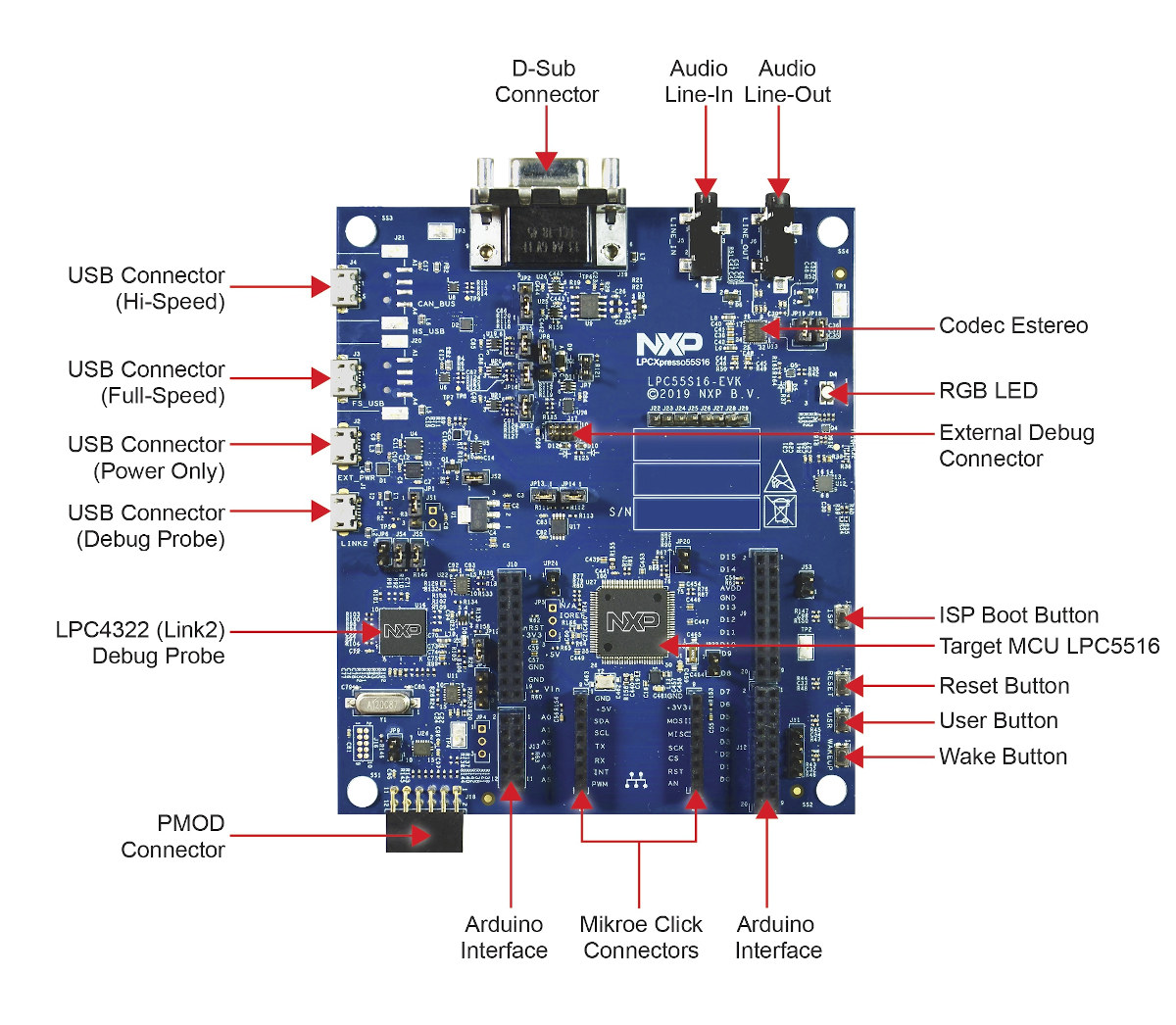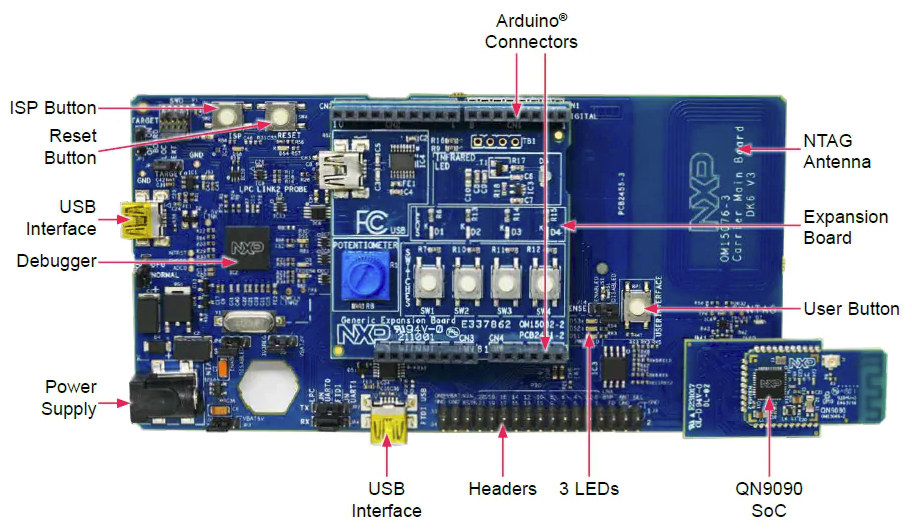NXP may have just unveiled plans for i.MX 9 processor family with Arm Ethos U65 microNPU, and advanced security using the company’s EdgeLock enclave, but NXP also introduced new members to its popular i.MX 8 series with i.MX 8ULP and i.MX 8ULP-CS (Cloud Secured) processors. Both processors come with a mix of Cortex-A35 application processor(s) and Cortex-M33 real-time core, as well as Energy Flex low-power architecture and EdgeLock secure enclave, but i.MX 8ULP-CS includes Microsoft Pluton for secure cloud connectivity and lacks 2D/3D graphics and the HiFi 4 audio DSP. NXP i.MX 8ULP and 8ULP-CS key features and specifications: CPU i.MX 8ULP – Up to two Arm Cortex-A35 @ 1.0 GHz and Arm Cortex-M33 @ 216 MHz, i.MX 8ULP-CS – One Arm Cortex-A35 @ 1.0 GHz and Arm Cortex-M33 @ 216 MHz GPU (i.MX 8ULP only) – 2D GPU, and 3D GPU with support for OpenGL ES 3.1, OpenCLTM, Vulkan […]
NXP i.MX 9 processors to integrate Arm Ethos U-65 microNPU, EdgeLock secure enclave
NXP i.MX 6 and i.MX 8 processors are widely used in industrial boards and systems-on-module, and the company has now teased a new family with i.MX 9 processors integrating Arm Ethos-U65 1 TOPS microNPU, as well as the company’s EdgeLock secure enclave for increased security. The company did not provide that many technical details, so we still don’t know which CPU cores, GPU, and exact peripherals will be found in the processor. But we do know the i.MX 9 processors will be manufactured with a 16/12nm FinFET class of process technology optimized for low power, and features the “Energy Flex” architecture that combines “heterogeneous domain processing (independent applications processor and real-time domains with a separate low-power multi-media domain), design techniques, and process technology to maximize performance efficiency”. That means most blocks of the processor can be turned off for low power audio or CAN networking use cases, and other industrial […]
Hantro H1 hardware accelerated video encoding support in mainline Linux
With the increasing need for video encoding, there are some breakthrough developments in hardware-accelerated video encoding for Linux. Bootlin has been working on the implementation of Hantro H1 hardware accelerated video encoding to support H.264 encoding on Linux which follows the company’s work on the previously-released open-source VPU driver for Allwinner processors. Hantro H1 Hardware Hantro H1 is a common hardware H.264 encoder, it can also do VP8 and JPEG. It is found in a few ARM SoCs including a lot of Rockchip (RK3288, RK3328, RK3399, PX30, RK1808) and NXP (i.MX 8M Mini). Depending on the version, it can support up to 1080p at 30 or 60 fps. Here we can see different blocks used for encoding. Hantro H1 is a stateless hardware implementation which means it has no microcontroller or firmware running. As can be seen in the diagram, it has a pre-processor that can do things like cropping, […]
NXP IW620 2×2 Wi-Fi 6 & Bluetooth 5.1 Chip Targets Gaming, Audio, Industrial and IoT Markets
NXP has announced the IW62X WiFi 6 & Bluetooth 5.1 family of chips designed for high-end gaming, audio, industrial and IoT markets. The family currently consists of IW620 and IW620S parts with respectively PCIe and SDIO host interfaces. Both chips integrate dual-band Power Amplifiers (PAs), Low Noise Amplifiers (LNAs), and switches in order to reduce the board-level BOM (Bill of Materials). IW62X key features and specifications: Wi-Fi 6 (802.11ax) 2×2 Wi-Fi 6 DB (802.11ax) 1024 QAM, 80MHz Peak Throughput: 1.2 Gbps Improved wideband noise & MU-MIMO performance Advanced active channel scanning 802.11s, EasyMesh 802.11mc Bluetooth & Bluetooth Low Energy 5.1 BLE 2Mbps + Long Range BLE direction finding with Angle of Arrival (AoA) and Angle of Departure (AoD) BLE Mesh Antenna support 2×2 5G 1×1 2.4G + BT Multimode energy-efficient support (TWT, Micro AP, TX Power Control, Wi-Fi Direct, BT5.1) Host Interfaces IW620 – PCIe 1.0 IW620S – SDIO 3.0 […]
Interview – NXP Linux BSP and Timesys Vigiles Maintenance Service & Security Updates
I’ve been interviewing Ed White, Manager of NXP’s Professional Support and Engineering Services, and Akshay Bhat, Director of Engineering, Security Solutions at Timesys by email to find out more about NXP Linux BSP development process, and how Timesys can help to keep it updated and secure with its Vigiles service. Q1. CNX Software readers recently discussed NXP Linux BSP update status. One person specifically noted Linux 4.14.98 used in the BSP was well over a year old, and there were various opinions about the topic, including one person suggesting NXP only provides a stable BSP and it was the ultimate responsibility of the customer to merge Linux security patchsets. Could you explain the typical development process for NXP Linux BSP, and why the company chose not to update the patchsets regularly? Answer: The kernel strategy for NXP’s i.MX family BSPs closely follows the annual cadence of kernel.org’s LTS kernel selection. […]
NXP LPC551x/S1x Arm Cortex-M33 MCU Family Launched with LPC55S16 Development Board
NXP has announced the general availability of LPC551x/S1x Arm Cortex-M33 MCU family with low power consumption, embedded security, pin-, software- and peripheral-compatibility. The LPC551x/S1x family is manufactured using a cost-effective 40-nm NVM process technology and targets industrial and general embedded markets. An LPC55S16 based development board – PLC55S16-EVK – is also offered for evaluation and software development. NXP LPC551x/S1x MCU Key features and specifications: CPU – Arm Cortex-M33 core @ up to 150 MHz delivering over 600 EEMBC CoreMarks and consuming as low as 32uA/MHz Memory and Storage – Up to 256 KB on-chip flash; up to 96 KB SRAM; 128 KB boot ROM Peripherals CAN FD / CAN 2.0 Dual-USB with on-chip PHY, supporting both HS and FS modes SDIO and up to 9 FlexComm interfaces (configurable as either SPI/I2C/I2S, UART) Up to 64x GPIO pins 16-bit ADC with five differential channel pair Comparator with five input pins and […]
NXP WiFi 6 Solutions Launched for Home, Enterprise, IoT and Automotive Markets
Several silicon vendors started to unveil WiFi 6 (802.11ax) chips in 2017-2018 such as Broadcom BCM43684, BCM43694 & BCM4375, and Marvell 88W906x. While NXP launched QorIQ LA1575 programmable wireless SoC with expected 802.11ax support early 2017, AFAIK they did not introduce any specific WiFi 6 chips. But last year, the company used some of its cash to purchase Marvell’s WiFi & Bluetooth business and has now announced the availability of Marvell NXP WiFi 6 chips and solutions which mostly are the ones announced by Marvell in 2017. NXP Wi-Fi 6 solutions include NXP 88W9064 & 88W9068 4×4 and 8×8-stream solutions with WiFi 6 and Bluetooth 5 for home and enterprise access solutions NXP 88Q9098 concurrent dual Wi-Fi 6 2×2+2×2 + Bluetooth 5 AEC-Q100 qualified solutions for infotainment and telematics automotive applications NXP 88W9098 concurrent dual Wi-Fi 6 2×2+2×2 + Bluetooth 5 solutions for multimedia streaming and consumer access applications Unnamed […]
NXP QN9090 & QN9030 Bluetooth 5.0 SoC’s Come with Optional NFC Tag (NTAG)
NXP has recently announced the availability of its QN9090 and QN9030 Bluetooth 5.0 SoC with optional support for 802.15.4, Multiprotocol RF, and NFC technology. Both devices are powered by an Arm Cortex-M4 core clocked at 48MHz, but differ in terms of on-chip storage and memory with QN9090 equipped with 640KB flash and 152 KB SRAM, against 320KB flash and 88KB SRAM for QN9030. The “T” versions – QN9090T and QN9030T – add NFC integrated on-chip, enabling Bluetooth pairing by tapping a smartphone, tablet or other NFC reader device without the need for a battery-powered NFC tag. NXP QN9090(T) & QN9030(T) Bluetooth 5.0 SoCs Key features and specifications: CPU – Arm Cortex-M4 up to 48MHz Built-in Memory & Storage QN9090(T) – 640 KB flash, 152 KB RAM, 128 KB ROM QN9030(T) – 320 KB Flash, 88 KB RAM, 128 KB ROM External Storage – Quad-SPI for execute in place or data […]


